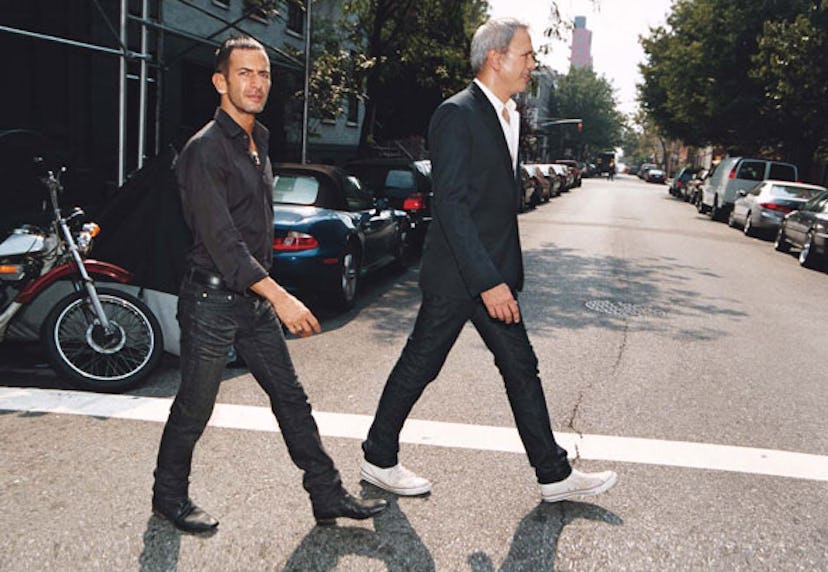Marc Jacobs Robert Duffy

Early on, the smart money bet that neither the partnership nor the house would last. But 20-plus years have proven the smart money very wrong. Together Marc Jacobs (left) and Robert Duffy have endured a litany of trials almost absurd in its diversity—failed financial backing, grunge backlash and Jacobs’s battle with substance abuse, to name a few. Yet through it all, the two have directed a stunning ascent to the pinnacle of fashion from two distinct seats of power. After Jacobs signed with Louis Vuitton in 1997, his swift transformation of a stuffy luxury leather-goods giant into a remarkable trend-spawning one confirmed worldwide what his ultraloyal homegrown fan base had long known—that he is a wildly talented, quietly fearless creator, one capable of impacting international fashion in a major way.
While Paris, which Jacobs now calls home, provided the international stage, the New York–based Marc Jacobs company remains a hotbed of influence both creatively and in terms of its novel approach to growth under Duffy’s iconoclastic supervision. Case in point: the flourishing secondary line Marc by Marc Jacobs, the envy of many a competitor. Its tiny retail boutique on New York’s Bleecker Street is a veritable mecca for fashion types from assistants to actresses of the Olsen-Hathaway-Johansson ilk and FOMs (friends of Marc) Sofia Coppola and Rachel Feinstein. Yet on a given day, the scores of trend seekers might just bump into Ron Perelman or even Vanessa Redgrave. Part of Duffy’s MO is to put stores not in tried-and-true retail enclaves but wherever fancy might strike, and not all venues have been welcoming. When that first West Village shop was about to open, someone graffitied go back to soho on its front, evidently fearing it would change the nature of the area. Now the Marc-ification of Bleecker Street and the surrounding area—a third store was scheduled to open this September; two other company venues are in the works nearby—is a point of neighborhood pride, not to mention a centerpiece of local business. Through it all, Jacobs has achieved the remarkable in another sense, managing to retain his aura of young-designer cool well into his 40s.